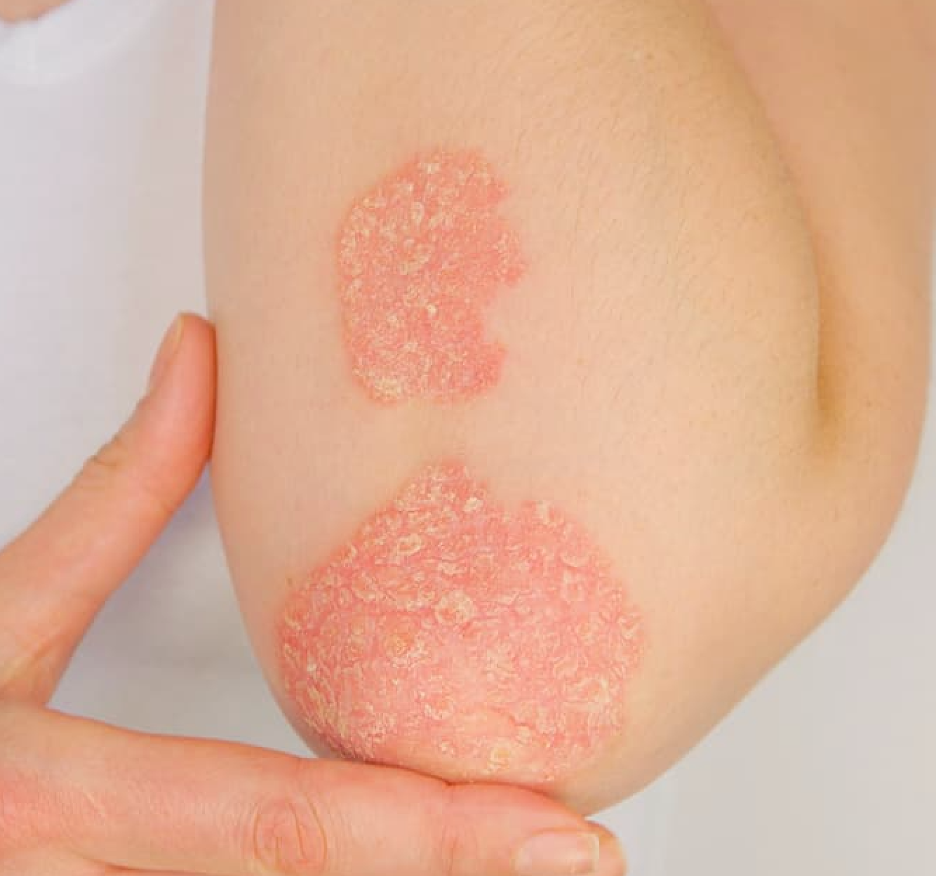Article
Specific Inflammatory Markers Linked to Psoriasis Area and Severity Scores
Author(s):
New research found that certain systemic markers in psoriatic arthritis and psoriasis patients correlated with PASI scores, indicating the clinical relevance of platelets and neutrophils in inflammation.

Several systemic inflammatory markers in psoriasis vulgaris and psoriatic arthritis (PsA) patients indicate the underlying inflammation in their systems and may help to indicate treatment approaches, according to new findings.1
Some of these markers included neutrophil/lymphocyte ratio, monocyte/lymphocyte ratio, neutrophil, monocyte, and platelet counts, systemic inflammation response index (SIRI), systemic immune/inflammation index (SII), and C-reactive protein (CRP).
These were all found to be positively correlated with ratings on the Psoriasis Area and Severity Index (PASI). The findings were authored by Eiki Sugimoto, MD, from the Department of Dermatology at the University of Tokyo’s Graduate School of Medicine.
“The present study evaluated peripheral blood parameters and systemic inflammatory scores in psoriasis patients with or without arthritis compared with healthy controls,” Sugimoto and colleagues wrote. “We examined the association of each systemic score system with PASI scores and with the presence of arthritis.”
Given the growing evidence that psoriasis patients’ increased and sustained systemic inflammation may directly lead to psoriatic disease in general, the investigators sought to examine the central part played by systemic inflammation.2
Background and Findings
The investigators analyzed psoriasis patients who had visited the University of Tokyo Hospital between April of 2019 and March of 2022 and who were diagnosed with psoriasis vulgaris or psoriatic arthritis according to the Classification Criteria for Psoriatic Arthritis (CASPAR) criteria.
Study participants with specific types of psoriasis and healthy controls with no history of allergy or skin diseases were also included in the study. The investigators had them receive various treatments, including topical, oral, ultraviolet therapies, and biologics.
The treatment they gave to participants included oral medications such as apremilast, etretinate, cyclosporine, and methotrexate, in addition to biologics that inhibit IL-17A, TNF-a, IL-17 receptor, and IL-23p19.
Specifically, the research team used the TNF inhibitors infliximab and adalimumab; IL-17 inhibitors included secukinumab and ixekizumab targeting IL-17A and brodalumab targeting the IL-17 receptor. Additionally, IL-23 inhibitors included guselkumab, tildrakizumab, and risankizumab, which target IL-23p19.
The investigators utilized data from their patient registry that had been established during diagnosis to obtain hematological laboratory data of both healthy individuals and patients. The severity of skin condition was assessed using PASI scores, while patients with PsA were classified based on the type of arthritis they had: peripheral, axial, or a combination of both.
To determine systemic inflammatory scores, the team calculated NLR, MLR, PLR, SII, and SIRI using the absolute neutrophil count, absolute lymphocyte count, absolute monocyte count, and absolute platelet count.
The investigators recruited a total of 164 participants, consisting of 117 individuals with psoriasis vulgaris (PsV group), 47 individuals with psoriatic arthritis (PsA group), and 50 healthy controls (Healthy group).
The patients with psoriasis vulgaris had a mean age of 51.16 ± 18.26 years, with 80 men and 37 women. The patients with psoriatic arthritis had a mean age of 55.49 ± 13.78 years, with 29 men and 18 women. The healthy controls had a mean age of 54.30 ± 13.62 years, with 32 men and 18 women. There were no substantial differences in the age and sex distribution among the three groups.
The researchers reported that those with PsA had a tendency to have higher SII and SIRI compared to those with psoriasis vulgaris, but the differences were not found to be statistically significant.
They also found that those with higher levels of platelet to lymphocyte ratio (PLR) or C-reactive protein (CRP) at initial presentation were more likely to be diagnosed with PsA, indicating that these markers may be helpful in diagnosing arthritis.
Furthermore, the investigators assessed whether higher scores of systemic inflammatory markers could affect treatment continuation rates for conventional systemic agents and biologics. They found that patients with higher platelet or neutrophil counts, PLR, and SII scores had lower treatment continuation rates for conventional systemic agents.
This was not found to be true for biologics. Those on biologics generally showed high treatment persistence, regardless of pretreatment systemic inflammatory scores.
“This study has demonstrated the clinical relevance of platelets and neutrophils, suggesting their importance in inflammation and immune regulation in psoriasis,” they wrote.
The team noted that PLR and CRP may be used to diagnose PsA. Those with higher platelet or neutrophil counts, PLR, and SII scores were noted as less responsive to conventional systemic treatment.
Lastly, the investigators added that monitoring of inflammatory scores is recommended.
References
- Sugimoto E, Matsuda H, Shibata S, Mizuno Y, et al. Impact of Pretreatment Systemic Inflammatory Markers on Treatment Persistence with Biologics and Conventional Systemic Therapy: A Retrospective Study of Patients with Psoriasis Vulgaris and Psoriatic Arthritis. Journal of Clinical Medicine. 2023; 12(8):3046. https://doi.org/10.3390/jcm12083046.
- Gulliver W. Long-term prognosis in patients with psoriasis. Br J Dermatol. 2008 Aug;159 Suppl 2:2-9. doi: 10.1111/j.1365-2133.2008.08779.x. PMID: 18700909.





